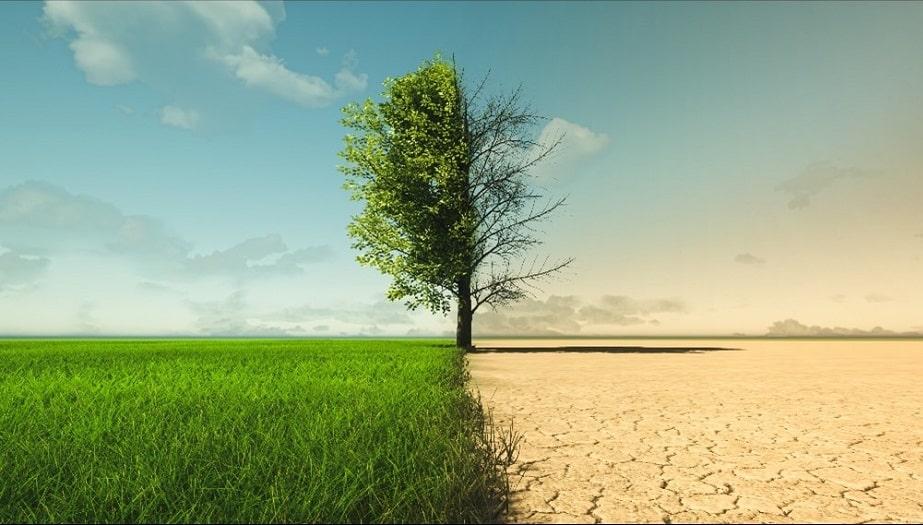Julia Maria Gomez de Avila Segade | 20/06/2023
Environmental responsibility has grown from a brand option to an essential requirement for operating in international markets. Ana Barreira, founder of IIDMA, tells us about the paradigm shift in the energy industry and its impact on the insurance industry.
When we asked Ana Barreira, founder of the International Institute of Law and Environment (IIDMA) and an expert in environmental law, about the Spanish Climate Change and Energy Transition Act, she explained that the law responds, mainly in environmental matters, to scientific evidence. “To achieve the objective of the 2015 Paris Agreement, that is, that the overall temperature of the planet does not rise above 2°C, all economic sectors must act. Not only is the insurance industry affected by climate change, but its activity also affects climate change,” she says. Along with her, we reviewed the key aspects of this common commitment of society and the network of businesses.
The fight against climate change has been compounded by the effects of the pandemic and geopolitical instability, how have these factors converged?
Everything is interrelated. The equation posed in this question is missing the biodiversity loss factor, which is another of the major crises we face. Global warming is not new, we have been warned about it since the 1980s. However, given the limited social awareness that existed at the time, because human beings are only concerned when the effects are tangible, action was not taken in time.
At the same time, scientists had also been warning that the loss of biodiversity could lead to the emergence of new viruses but, once again, they were ignored. As a result, the pandemic affected health and the economy, even though the economic slowdown helped to reduce greenhouse gas emissions. By continuing to rely on fossil fuels, instead of starting the energy transition at the end of the last century, when the pandemic was brought under control, emissions increased again. On the other hand, when Russia decided to invade Ukraine, by continuing with a “carbonized” economic model, we felt the ravages of that dependence.
“The insurance industry is essential, along with the financial industry, to driving the transition of energy companies”
How has the relationship between energy companies and large insurers evolved?
Energy companies need insurance to operate. As I mentioned, our economy is too dependent on fossil fuels and this impacts the insurance industry. However, at the same time, this industry is essential, together with the financial industry, to drive the transition of the energy sector. There are energy companies proving that the transition is possible. Therefore, through insurance, the transition of energy companies can be influenced, as can financial products and services.
What other industries are being particularly affected by this situation?
All industries require energy for their activity and, therefore, all are affected, some more than others. The steel industry, for example, which must stop using coal. In Spain, many of the companies in this industry use electric furnaces, although the electricity they use is mainly generated with gas. Gas burning emits methane, which is another greenhouse gas with a warming potential 80 times greater than that of carbon dioxide (CO2) during the 20 years following its release into the atmosphere. Transportation is another sector. At the same time, the agriculture sector also generates methane.
Could you tell us about the tools available to the industry to be able to play an important role in the energy transition and sustainable technological development?
The insurance industry has its main tool, which are the insurance policies themselves. These must take into account the climate and environmental risks of the insured risk. These elements must be internalized when analyzing and establishing the contractual terms and conditions of the policies.
At the same time, the insurance industry also plays an important role as an investor and in making investment decisions, as well as in the sectors in which it decides to invest. It must analyze how these investments contribute to climate change, loss of biodiversity, pollution, etc. This requires a medium- and long-term vision.
“We cannot continue on the same path that has led us to the current situation”
Likewise, the insurance industry must establish clear and decisive insurance policies that take into consideration the protection of the climate system and the environment. Policies have already started to be put in place to encourage discontinuing the use of coal, but much more needs to be done. It must also be transparent and report all its environmental risks. Unfortunately, at present, not only the insurance industry, but many other sectors are not properly analyzing climate and environmental risks.
Finally, I consider it essential that insurers establish Climate Action Plans as required by the Spanish Climate Change and Energy Transition Act.
What measures can be taken to minimize the risks and costs associated with the energy transition?
The best measure is to drive decarbonization through its activity, given that the greatest risk and cost is climate and environmental degradation, together with the tools I have just described.
What are the regulatory challenges insurers face when engaging in the energy transition?
There are always regulatory risks. It is a fact that we are in a transition and that regulatory changes are occurring faster than a few decades ago. Therefore, it is essential to have well-trained teams in matters of climate change and energy transition that are able to foresee those changes in order to be prepared.
What challenges does the industry face in the medium- and long-term and how can they be successfully overcome?
I believe that one of the biggest challenges in the industry and in many other industries is the lack of personnel trained to understand climate and environmental issues in depth, issues that are complex, in order to design products and policies in line with the physical reality. This can be improved with generational replacements. At the same time, another challenge is resistance to change, which is very human but transcends corporations. We are in times of transition and uncertainty, but we must make decisions that generate profound changes, because we cannot continue on the same path that has led us to the current situation.
Interviewee profile
 Ana Barreira is an attorney and Director of the International Institute of Law and Environment (IIDMA). Master’s in International Law Studies (New York University) and Environmental Law (London University).
Ana Barreira is an attorney and Director of the International Institute of Law and Environment (IIDMA). Master’s in International Law Studies (New York University) and Environmental Law (London University).
She was legal advisor to the Spanish Presidency of the European Union in 2002 and has worked as an international consultant on projects for the World Bank and the European Commission. She is an assistant professor at the IE School of Politics, Economics and Global Affairs.





